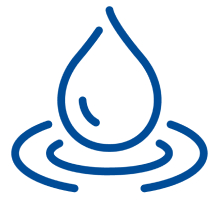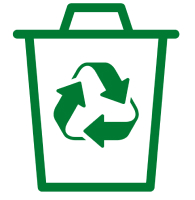Turning Waste into Opportunity
When the Clean Water Act was passed in 1972, it spurred construction and expansion of sewage treatment plants across the country. The aim was straightforward – protect our rivers and streams from pollution. Since that time, the industry has come to understand that sewage is not simply a waste product; sewage presents an opportunity. The paradigm has shifted from sewage disposal to re-focus on the beneficial products of sewage treatment, such as production of clean water, reclamation of resources and energy generation. Emblematic to this transformation is the rebranding of wastewater treatment plants (WWTP) of the past to Water Resource Recovery Facilities (WRRF).
Several communities in the Northeast have implemented resource recovery projects at their municipal wastewater treatment plant. As well as realizing the environmental benefits, recovering resources can provide new revenue or cost savings to a community. The example municipalities epitomize resource recovery principles and provide a template for similarly sized communities to make the shift.
-
The City of Rome, NY recently completed an upgrade to the solids processing system including outside waste acceptance, anaerobic digestion improvements, biogas cleaning and a new combined heat and power system. From the project, the City has gained a revenue source from local businesses through waste tipping fees and reduced their operating costs by converting waste into renewal energy in the form of biogas which is used to heat its digesters and produce electrical energy. These improvements will allow the WRRF to become net-neutral in energy usage and production.
-
The City of Oneida, NY is currently undergoing a construction project to upgrade the liquids and solids treatment infrastructure. These upgrades generally include expanded aeration system, blowers, new secondary clarifiers, new sludge pumps, new thickeners and process tanks, and new anaerobic digesters. Digester gas will be utilized for digester heating, provide heat for multiple on-site buildings and for hot water. The upgrades will improve the quality of the effluent water, which is seasonally utilized for irrigation at a local golf course.
-
The Town of Webster, NY is developing a project for improved anaerobic digestion and biosolids drying. The improvements and use of a biosolids dryer are designed to produce a Class A dried biosolids product, which can be beneficially used as a soil amendment or fertilizer. Land applying the dried biosolids recycles nutrients from treated sewage and would support new growth.
The modern WRRF realizes the opportunity presented in wastewater treatment to recover vital resources in the circular economy. With policies of carbon neutrality and sustainability implemented and discussed on federal, state and local levels, WRRFs will play an important role in meeting current and future goals.
For more information, please contact: Eric Moody or Amy Weils in our Water Resources group.


This article is from members of the Water Resources and Solid Waste Practice Areas.


